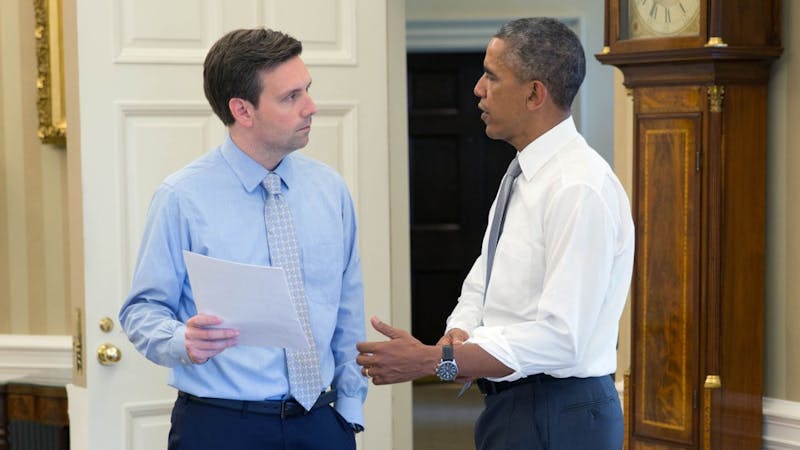Rice administration faces student, faculty concerns over rising tuition
As students fret over their GPAs, they can rest assured that there is one number that will not be dropping anytime soon. Concern is growing across campus in light of the administration’s recent announcement that the cost of tuition will rise to $41,560 for the next academic year, a 4.2 percent increase from this year’s cost of $39,880. Over the last 15 years, tuition has climbed by 135 percent, with the new total cost of attendance amounting to $55,903. Brown College Student Association senator Andrew Gatherer, who is leading an initiative in response to the tuition increase, said the administration must provide more information when addressing the rising costs. “I think it would be useful to see where the increased tuition is going,” Gatherer, a freshman, said. “You don’t really see the effects of [increased tuition] in the university. We don’t really know where it goes.”Professor of earth science Jerry Dickens stated in a letter to the Thresher that the administration must clearly explain the tuition hikes, referring to Vice President of Finance Kathy Collins’ statement that the money will be used for “educating students, faculty salaries, library resources and other operational expenses.”“The Rice community, especially students and parents, deserve at least an accurate answer for the skyrocketing tuition,” Dickens said. “I think most professors at Rice would be happily amazed by anything close to a salary increase rate of 135 percent over the last 15 years.”According to Collins, however, tuition increases help cover a number of costs beyond faculty salaries. “I did not say faculty salaries have increased 135 percent over the last 15 years,” Collins said. “I explained that tuition increases help cover a number of costs, and I cited a few examples, including faculty salaries, library resources and other operational expenses.”Vision for the Second CenturyCollins said tuition increases over the past decade have helped expand resources like the Program in Writing and Communication, create new undergraduate minors, bolster academic advising and wellness services and build projects like the Moody Center for the Arts, to be unveiled in 2016. “Inspired by our strategic plan known as the Vision for the Second Century, Rice has invested in strengthening and expanding the quality and range of its educational, research, recreational and community service opportunities,” Collins said.Rice’s operating expenses increased by 129 percent from 2001 to 2014 as a result of the investment in the Vision for the Second Century, according to Collins. Three major revenue sources — endowment distribution (57 percent), net tuition revenue (26 percent) and overhead recovery on grants (5 percent) — account for 88 percent of the revenues to support the core budget. Keeping the Cost AffordableAccording to Collins, Rice has tried to keep the rising tuition costs affordable through financial aid and loan programs. Rice’s financial aid packages currently require no more than $2,500 a year in loans and require no loans for families making $80,000 or less in annual income. According to data from the Federal Student Aid website, the unsubsidized federal loan maximum for first-year undergraduates is $9,500.“Rice has made an effort to keep its tuition about $5,000 to $6,000 less than most of its peers while also providing a generous financial aid policy to keep Rice affordable to qualified students from all socio-economic backgrounds,” Collins said. According to Gatherer, despite these efforts, there are still issues with transparency between students and the Office of Financial Aid that he is looking to address through the SA.“A lot of students have trouble connecting with the office,” Gatherer said. “They have to speak to many people before they actually realize how much money they owe and where it’s coming from.”Shaian Mohammadian, recipient of the Beverly and Donald Bonham Scholarship, said he experienced a lack of communication with the Office of Financial Aid.“I didn’t even know there was a tuition increase, and no one from the office has notified me about anything,” Mohammadian, a Jones College freshman said. “The transparency doesn’t seem to be where it needs to be, for sure.”Gatherer said that in light of the tuition increase, students should be aware of how rising costs affect their financial aid plans. “A lot of information is available on their website, but a lot of the time, you don’t realize the specifics for you until you’ve talked to about four or five people at the office,” Gatherer said. “We want to make sure students don’t feel like they’re sinking.”Gatherer said the SA also wants to ensure that the university expands their financial aid and loan programs to accompany rising tuition costs. “It’s not really the SA’s place to complain to the university about how much tuition is,” Gatherer said. “But what the SA is doing is, we’re trying to nullify the bad effects of increasing tuition. Some people come in with so much money in scholarships, and they feel that over the four years they see that money disappear, and if not marginalized, because of the increase in tuition.”Gatherer said despite the current problems with financial aid, he is confident that the office is willing to cooperate with the SA.“I know they’re very busy dealing with all the students who need financial aid,” Gatherer said. “But they are receptive to student concerns. It’s just about having that outline and knowing how much money you’re going to pay.”






